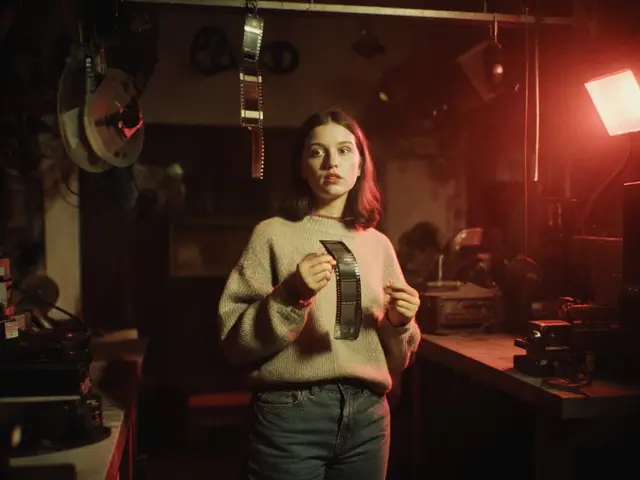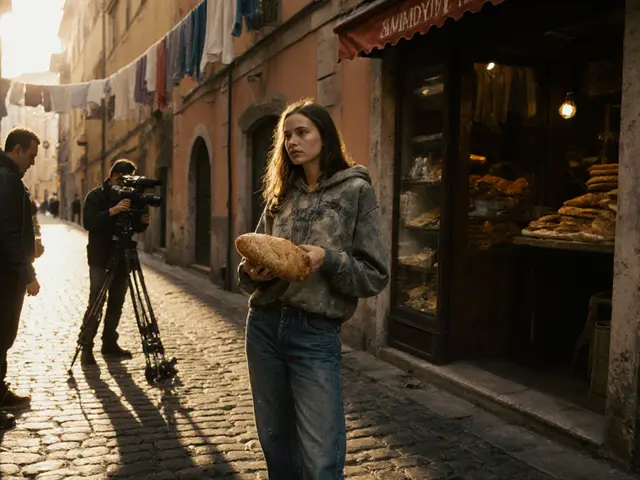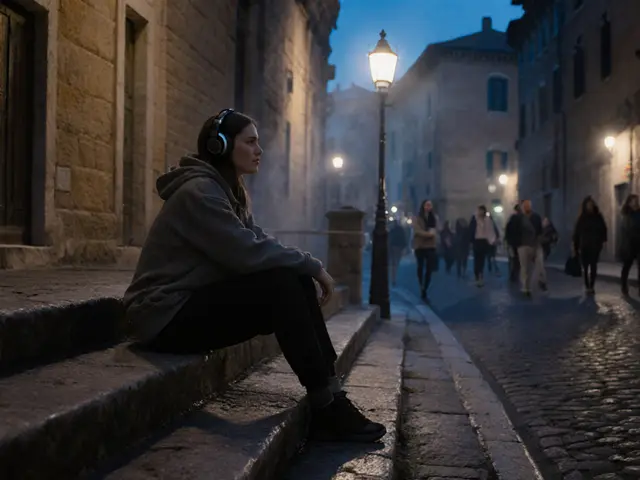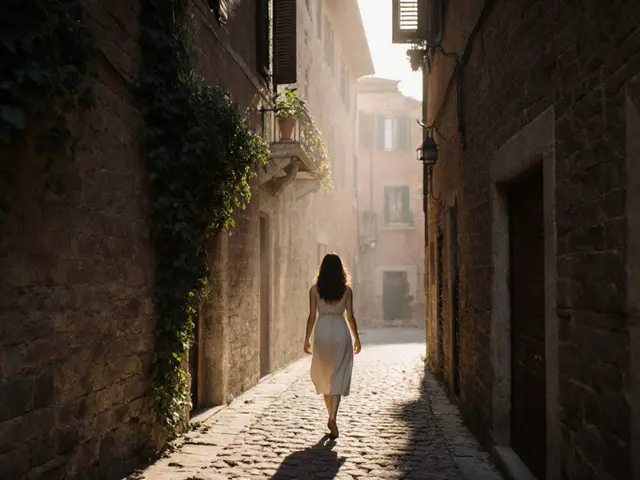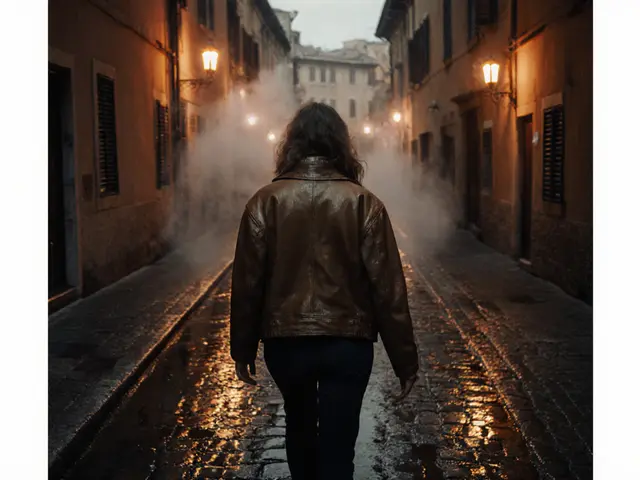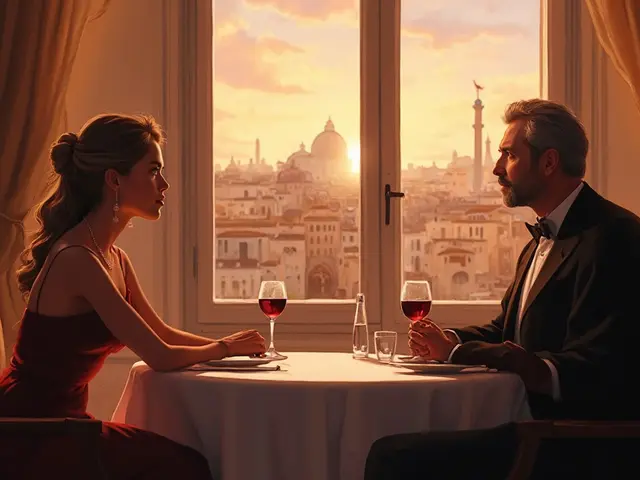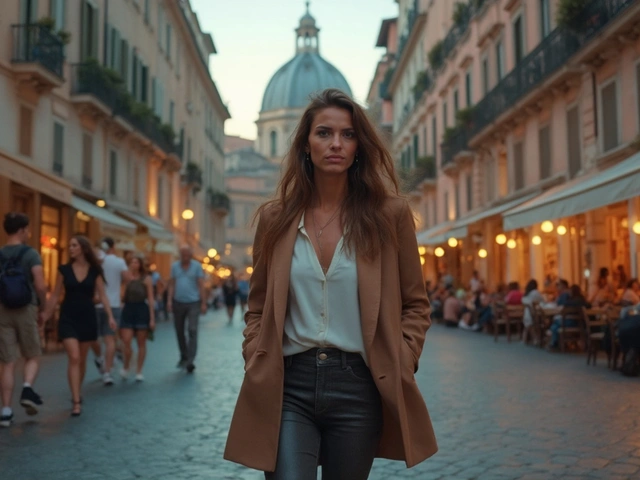The Italian summer doesn’t play fair. It bakes the cobblestones, heats up tempers, and—every so often—it becomes the perfect backdrop for the wild creation of something unforgettable. In 2021, the city hummed with chatter about one name: Marica Chanelle. While most were sweating in linen, a few were sweating over scripts with visions of making Marica more than just a familiar name in independent film. How do you take a rising talent and mold her into the kind of icon that lingers in Rome’s memory after sunset? The answer comes coated in a blend of chaos, perseverance, and Roman unpredictability.
Rome’s Spell: The City as a Character
Rome has a sneaky way of poking its nose into your plans. You might think you’re in charge, but wait until a delivery van blocks your shot for an hour, or a piercing siren drowns your dialogue. Marica’s ascent wasn’t just about her own fire—it sucked in Rome’s unfiltered energy, too. The Trastevere neighborhood, for example, didn’t just serve as a location. Its caramel-colored walls and laundry-festooned alleys dialed up authenticity, lending a lived-in texture to every scene Marica set foot in.
This wasn’t staged prettiness. Rome in the last five years morphed into a giant outdoor set for up-and-coming filmmakers. Historic spots like the Ponte Sisto were roped off, sometimes illegally, to keep background extras local: think weathered market vendors and the retired ballet teacher who always had her dog at her heels. Marica thrived among these real folks, pulling inspiration from overheard arguments at espresso bars or market stalls. She admitted once in an interview taped at Piazza Navona that she’d practiced her roles by eavesdropping on street-side chess players, stealing mannerisms for later use. It’s all about keeping your antennae up, she said. If you slip into autopilot in Rome, the city’s magic washes right past you. For actors, this practical tip is gold: build your character from what the city hands you.
The press loves to paint Rome as a cinematic cliché—the scooter races, the sparkling fountains, the after-midnight gelato strolls. But if you dig beneath the surface, the city offers gritty little moments that polish a performance beyond what’s scripted. Marica picked up her glances, her pauses, even the way she tossed her hair from everyday Romans. No fancy method acting retreat needed. She created a unique character stew from Rome’s natural recipe, burning into the camera like the city burns into tourists’ feet by the afternoon.
The Hidden Grit: Long Hours and Low Budgets
People swoon over the glamour of an Italian film set, but the reality hits differently when the espresso machine breaks at 6 a.m. and it turns out you’re sharing a dressing room with a mop bucket. Marica Chanelle didn’t land in Rome as a polished star; she came with a suitcase, two scripts, and that mix of nerves and guts that only grows from hustling.
To catch the right light, shoots sometimes started before the street cleaners had finished their rounds. Marica and the crew squeezed every euro out of thin budgets, borrowing costumes from theater schools and negotiating for locations by handing out film credits—or pastries. Often, extras doubled as crew, scrambling between pouring rain and too-bright sun. Here’s a hard fact: the average indie film project in Rome between 2018 and 2023 operated on less than €120,000, according to data pulled from the Italian Film Commission. Actors and directors wore more hats than a street vendor, patching together projects with stubborn optimism.
The biggest production tip out of Rome’s underground filmmaking? Flexibility. The weather changes, gear gets stuck in traffic, and actors cancel if their kid’s school has a holiday. Marica gained a reputation for rolling with these curveballs. Whether she had to leap over a Vespa or change lines mid-shot because a street musician stole her thunder, she made it look like it was part of the plan. And that’s the real secret sauce—the ability to use chaos as fuel, not an excuse. If you’re chasing a dream on a budget, she’d say: don’t lose your cool when things fall apart. Find your shot, even if it wasn’t the one you storyboarded.
The numbers below show what a shoestring creative process really looks like in Rome:
| Aspect | Average Value (2018-2023) |
|---|---|
| Indie Film Budget | €120,000 |
| Shooting Days | 21 |
| Cast Size | 8 |
| Crew Size | 12 |
| Locations Used | 4 |
The Marica Effect: What Made Her Different
It wasn’t pure luck that put Marica Chanelle on the map in Rome. Her secret weapon was a strange kind of stubbornness. She didn’t just clock in for her performances and knock off for a spritz at sundown. She chased after directors whose shoestring scripts were barely legible. She treated every extra with the same attention she gave to the main cast, grabbing a pizza with the new kid on set, and earning herself fierce loyalty.
She also worked on her Italian. Not the textbook kind you get from apps, but the slang-heavy, region-specific phrases you only pick up from feisty Roman grandmas and late-night grill parties. This wasn’t only for authenticity on camera—it put everyone at ease behind the scenes. Suddenly, producers and lighting techs would come to her with their own ideas, confident she’d listen. Her close relationships paid off—when a lead actor dropped out on a crucial shoot, Marica called in favors and had an understudy in costume that same hour. The cast barely broke stride.
Another game-changer was her off-duty work ethic. She’d run lines barefoot and shoot test footage on an iPhone, critiquing herself late into the night. She invited the director to dinner to storyboard new ideas while downing carbonara, cementing her reputation as a team builder. She even wrote one of her own scenes to fix a pacing issue, something rare in early-career actors in Italian cinema.
If there’s one piece of advice she offers to newcomers, it’s to blend humility with initiative. She never assumed the next gig was guaranteed, even after her big break in a short called “Sotto La Luna.” Marica kept auditioning, kept pushing, and brushed off setbacks. That combo—persistence and self-awareness—does more in Rome than any agent. Her story resonates because it’s grind, not glamour, that breeds icons.
The Details You Don’t See: Setbacks, Strategies, and Surprises
Nobody loves to talk about failures, but Marica had plenty. On her first big scene, she flubbed a line, and it ended up in the director’s final cut because it felt “real enough.” During an outdoor shoot near the Pantheon, a sudden rainstorm wiped the makeup off nearly every actor’s face, turning a dramatic shot into slapstick. Instead of panicking, the crew rewrote the scene to lean into the chaos, turning the washed-out look into a metaphor for vulnerability.
Marica was also a champion of keeping the mood up on tough days. If tempers grew short under deadline pressure, she’d break the tension with a joke or haul out a Bluetooth speaker for a spontaneous dance break. Productivity and morale soared, and in the gritty world of indie Rome, that’s not just nice to have—it’s necessary. A study from Sapienza University in 2023 actually linked lighter sets with higher creative output, something Marica seemed to know intuitively. So if you’re aiming to break out in Italian cinema, don’t just watch your lines. Watch the mood and, sometimes, the weather forecast.
The team also kept a kind of “set survival kit”:
- Extra batteries (power outages love Italian summers)
- Wet wipes (for everything from makeup smudges to spilled espresso)
- Translators on speed dial (regional dialects can confuse even fluent Italian speakers)
- Reusable water bottles (hydration is key with Roman heat)
- Licorice candies (delivered by Marica herself at midday to combat flagging energy)
Every culture clash, weather mishap, and budget crisis became a story stitched into Marica’s reputation. That’s maybe the most practical takeaway for anyone making art in a city that doesn’t play by the rules—you need to turn setbacks into style.
The Legacy: Setting the Bar in the Eternal City
Marica Chanelle is now shorthand for a new way to become an icon—one built from resilience, genuine teamwork, and an unfiltered love for the mess that is Rome. Since her breakthrough, local acting workshops use “Chanelle-style improvisation” as a training exercise, encouraging students to ditch perfectionism and play with everything the city throws at them, from noisy scooters to nosy neighbors. Directors swear by her knack for finding the “heartbeat” of a scene, not just the script lines. Even Roman film schools have started copying her blend of street smarts and international polish.
More than a year after her star turn, you still see posters with her face along the Via del Corso, and aspiring actors hanging around trattorias Marseille-style, hoping for their Chanelle moment. The city’s film output jumped by 14% in 2024, according to data from Cinecittà Studios, thanks in part to the wave she inspired. She made it cool to try, fail, and try again.
The best part? Marica’s style isn’t impossible to copy. She combines stubborn focus, street-level humility, and a wicked sense of humor. If you blend those elements, you’ll last longer in Rome than any passing trend. If anything, her journey proves that filmmaking in Rome is about showing up—sunscreen in one hand, script in the other, ready for whatever the city throws your way. That’s the real secret behind every headline and highlight reel. In Rome, you don’t just make a film. You make a legend, one wild, messy day at a time.

